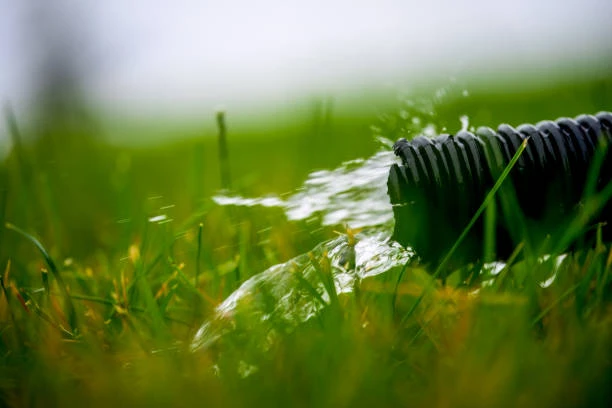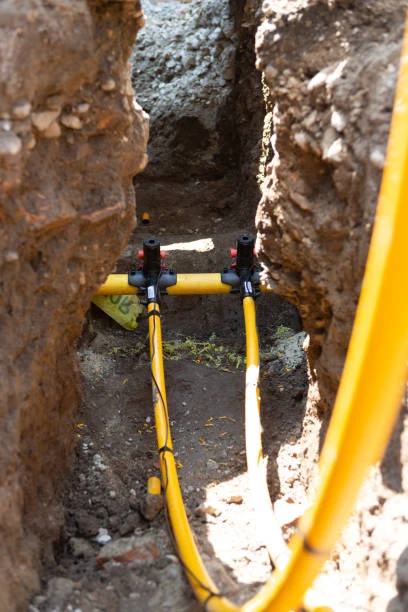In a recent incident in southern Sydney, a Water pipe burst, flooding multiple homes and causing significant disruption to residents in the area. The burst pipe, which was part of the city’s aging infrastructure, led to extensive water damage, property loss, and a temporary shutdown of local services. This event underscores the importance of maintaining and upgrading water-pipe infrastructure to prevent such catastrophic failures.
In this article, we’ll take a closer look at the events surrounding the water-pipe burst in southern Sydney, discuss the underlying causes of such incidents, and explore the importance of proactive maintenance and advanced technologies in ensuring the reliability of urban water systems. We’ll also provide insights into how homeowners and authorities can work together to minimize the impact of such disasters.

The Incident: Water Pipe Burst in Southern Sydney
In the early hours of the morning, a major water pipe in southern Sydney burst, flooding several homes and streets in the surrounding area. Emergency services rushed to the scene as the water began to rise quickly, overwhelming basements, ground floors, and some parts of the street. The burst caused significant damage to properties, with some homes suffering from waterlogged carpets, furniture damage, and electrical issues due to the floodwaters.
Local authorities were quick to respond, cutting off the water supply to prevent further flooding. However, the damage had already been done, and several families were displaced while cleanup operations were underway. In the wake of the incident, the city’s water utility provider initiated an investigation into the cause of the burst and began planning for the necessary repairs and upgrades to prevent future incidents.
This event is not an isolated incident. In fact, water-pipe bursts are a growing concern in cities worldwide, especially in areas with aging infrastructure. As water systems continue to age, the risk of sudden failures increases, making it essential for authorities to invest in regular maintenance and advanced technologies to detect issues before they escalate.
Understanding the Causes of Water-Pipe Bursts
Water-pipe bursts can happen for a variety of reasons, and understanding these causes is crucial for preventing future incidents. Below are some common reasons why water pipes burst:
1. Water pipe Aging Infrastructure
One of the leading causes of water-pipe bursts in urban areas is aging infrastructure. Many cities, including Sydney, have water pipes that were installed decades ago. Over time, pipes can corrode, weaken, and develop cracks, making them more susceptible to breaking. As pipes age, their ability to withstand pressure and environmental stress diminishes, increasing the likelihood of a burst.
2. Water pipe Extreme Weather Conditions
Sydney, like many coastal cities, experiences a wide range of weather conditions, including heavy rain, extreme heat, and cold snaps. These extreme weather events can put stress on water pipes. For example, in freezing temperatures, water inside pipes can expand, causing them to crack or rupture. Conversely, during periods of intense heat, pipes can expand and contract, leading to fractures and eventual bursts.
3. Water pipe High Water Pressure
Water pressure is another common factor that can contribute to pipe bursts. High water pressure can put excessive stress on pipes, especially those that are already weakened due to age or corrosion. When the pressure exceeds the pipe’s capacity, it can cause the pipe to burst, leading to flooding.
4.Water pipe Corrosion and Material Degradation
Many older water systems were built using materials like cast iron, steel, or lead, which are prone to corrosion over time. As pipes corrode, the material weakens and becomes more brittle, making it more likely to crack under pressure. Even modern pipes made of materials like PVC can degrade if exposed to harsh chemicals or environmental factors for extended periods.
5. Water pipe Ground Movement
In areas where there is significant soil movement, water pipes can be affected by shifting ground, subsidence, or earthquakes. Ground movement can cause pipes to bend, crack, or shift, leading to leaks and bursts. In urban environments, construction work or excavation can also disturb underground pipes, potentially causing damage.
6. Poor Installation and Maintenance
Improper installation of water pipes can lead to weak points that are prone to failure. Additionally, lack of regular maintenance, such as cleaning and inspections, can allow small issues to escalate into major problems. In some cases, poor maintenance practices, such as ignoring leaks or failing to replace aging pipes, can contribute to burst pipes.
Impact of Water Pipe Bursts on Homes and Communities
Water-pipe bursts can have serious consequences for both homeowners and the broader community. The immediate impact of a burst pipe is the flooding of homes and properties, which can cause water damage to furniture, appliances, and other personal belongings. The water may also compromise electrical systems, leading to potential safety hazards.
In addition to physical damage, a water-pipe burst can lead to several other negative effects:
1. Health and Safety Concerns
Flooded homes pose health risks, especially if water comes into contact with electrical systems or sewage pipes. Standing water can also promote the growth of mold and bacteria, leading to long-term health issues for residents.
2. Property Damage
The financial costs of property damage due to water flooding can be significant. Water-damaged carpets, walls, and furniture can require expensive repairs or replacements. In some cases, if water reaches structural components, extensive rebuilding may be necessary.
3. Displacement of Families
In severe cases, families may be displaced from their homes while repairs are carried out. Temporary relocation costs and the disruption to daily life can cause significant emotional and financial strain on residents.
4. Water Shortages
The burst of a major water pipe often results in an interruption to the local water supply. In some cases, residents may be without water for an extended period, leading to inconveniences and disruptions to daily routines.
5. Environmental Impact
Flooding caused by a burst water pipe can have broader environmental consequences. Excess water can wash away soil, damage ecosystems, and contribute to pollution if contaminants from sewage or chemicals are introduced into the water supply.
Preventing Future Water Pipe Bursts: Solutions and Technologies
Given the substantial impact of water-pipe bursts, it’s crucial to take proactive steps to prevent such incidents from occurring in the future. Below are several strategies and technologies that can help prevent and mitigate the damage caused by water-pipe bursts:
1. Regular Inspections and Maintenance
One of the most effective ways to prevent water-pipe bursts is through regular inspections and maintenance of the water infrastructure. Routine checks can help identify weaknesses in pipes, such as corrosion, leaks, or cracks, allowing for timely repairs before a burst occurs. Local utilities should prioritize updating older pipes and replacing any that have reached the end of their service life.
2. Smart Water Management Systems
The adoption of smart water management systems can improve the detection and prevention of leaks in urban water networks. These systems use sensors and IoT (Internet of Things) technology to monitor the health of water pipes in real time, detecting changes in pressure, flow rate, or temperature that could indicate a potential issue. Early detection allows authorities to address problems before they escalate.
3. Upgrading Infrastructure
Upgrading the water-pipe infrastructure is crucial for cities with aging systems. Modern materials, such as high-density polyethylene (HDPE) or ductile iron pipes, offer greater durability and resistance to corrosion than older materials like cast iron. Investing in long-term upgrades will improve the overall reliability and safety of the water supply.
4. Pressure Regulation
Regulating water pressure is another important step in reducing the risk of pipe bursts. By ensuring that water pressure remains within safe limits, the likelihood of stress on pipes is minimized. Pressure-reducing valves can be installed in areas where high pressure is a concern, helping to maintain a stable flow of water without putting unnecessary strain on the pipes.
5. Public Awareness and Emergency Preparedness
Homeowners and local communities should be educated about the importance of water-pipe maintenance and emergency preparedness. This includes knowing how to shut off the water supply in the event of a leak or burst, and ensuring that insurance policies cover water-related damages. Emergency services should also be equipped to respond quickly to water-pipe bursts to minimize the impact of flooding.
Conclusion
The recent water-pipe burst in southern Sydney highlights the significant risks posed by aging water infrastructure and the urgent need for proactive maintenance and investment in modern technologies. Water-pipe bursts can lead to devastating consequences for homeowners, communities, and the environment. By adopting smart water management systems, upgrading aging infrastructure, and focusing on regular inspections, cities can reduce the frequency of these incidents and improve the overall reliability of water networks. With continued innovation and forward-thinking strategies, the risks associated with water-pipe bursts can be significantly mitigated, ensuring a safer and more resilient water supply for everyone.
Frequently Asked Questions (FAQ)
1. What caused the water-pipe burst in southern Sydney?
The cause of the burst is still under investigation, but common causes include aging infrastructure, extreme weather conditions, high water pressure, and corrosion.
2. How can water-pipe bursts be prevented in the future?
Preventing future bursts involves regular inspections, upgrading old pipes, using smart water management systems, and regulating water pressure to reduce strain on the pipes.
3. How can homeowners protect their property from water-pipes bursts?
Homeowners can ensure they have flood insurance, know how to shut off their water supply in an emergency, and maintain their plumbing systems to prevent damage.
4. What should I do if my home is flooded due to a water-pipes burst?
If your home is flooded, immediately shut off the water supply, unplug electrical appliances, and contact emergency services for help with cleanup and damage control.
5. What role does smart technology play in preventing water-pipe bursts?
Smart water management systems use sensors and real-time data to detect early signs of leaks


















